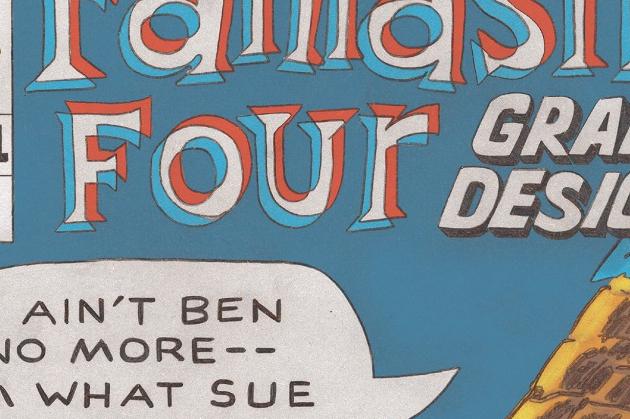Fantastic Four: Grand Design #1 Review
Book by: Tom Scioli
Published by: Marvel Comics
Comic auteur Tom Scioli continues the tradition started by Ed Piskor in "X-Men: Grand Design". In this comic, Scioli takes the over 50-year history of the Fantastic Four and tries to rearrange the bricks into a neat structure that can reveal the proverbial “grand design”. While the Piskor X books worked with the history of the mutants, this attempts a larger task by giving a comprehensive history of the human, inhuman, and galactic elements that have been so pivotal to the FF books and the Marvel Universe at large
.
The first 10 or so pages, lay the groundwork for the world that will birth these heroes. It is dense and slightly disorienting especially for a book supposedly about the Fantastic Four. Then when it goes into character origins, it finds more footing and each page is a great distillation of the makings of some very important and iconic characters. Next, we get the classic story of four astronauts in a stolen rocket. The retelling of the heroes getting their powers and their famous first mission on Monster Isle is what you'd expect from this title. After that, the last 20 pages is a four-color frenzy of the FF’s exploits.
Going through all these adventures shows the history of the comic in a succinct way. Some earlier pages that seemed like non-sequiturs are revealed to have been foreshadowing. This comic takes years and years of stories and lays them out one after another. But the pacing is a bit blurring. There doesn’t seem to be any obvious ends to the stories. Scioli's use of narration boxes keeps it coherent, and his clever dialogue keeps it interesting, but the unending feel of the latter half of this comic is a little off-putting.
It’s also kept engaging with the art by Scioli. He has a retro style that harkens back to Kirby, but he makes it his own. His drawings of the four in battle is great. His way of illustrating Sue going invisible is unique as well. Great colors and shading. The newsprint design adds to the unique aesthetic. But cramming so many panels on a page, some with over 20 panels, makes each panel have to focus on one aspect and try to express more than it can.
Although the layout is a bit of a downside, while I was reading it, I couldn’t seem to stop myself. Maybe that is because of the already mentioned lack of obvious breakpoints, but I also was never bored. In fact, I was enjoying myself a lot. That can be chalked up to the strength of these old stories (which is why they’ve stood the test of time and launched a universe), but I also give Scioli the credit he is due. He knows what to show and what to omit, what to focus on and what to bring up in the dialogue. And, knowing the next chapter of the story you’ll know the best is yet to come.
If the goal of this comic is to relay the history of the first family of Marvel Comics in one series, I’d say it is accomplishing that goal. The comic has an addictive quality to it. The colors, the pulpy design, and the 60’s sci-fi elements are just so delicious. The overwhelming way it is presented can be off-putting for some or confusing, but, for me, it just adds to the fun. It's like being in the cockpit of a zooming rocket as four-color cosmic rays crackle around you and theremin music plays. Personally, I’m enjoying the ride.






